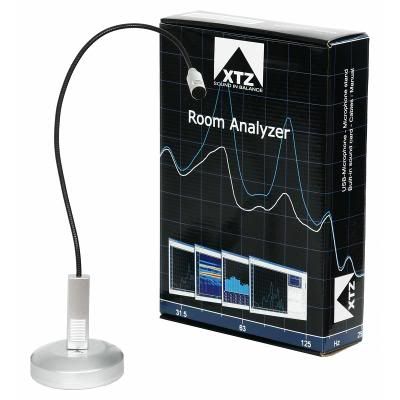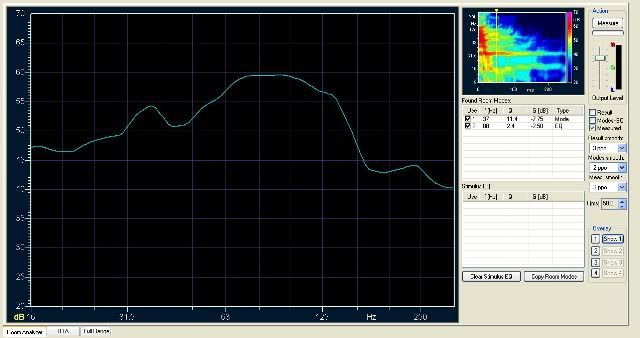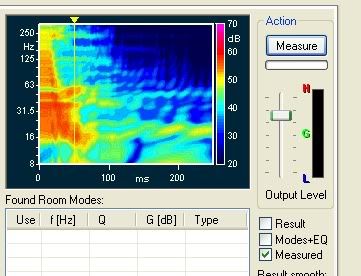
The XTZ Room Analyzer is basically an audio measurement tool. Probably its most useful feature is its ability to measure bass frequencies from 16 Hz to 250 Hz. The following chart corresponds to the raw performance of the Focal Electra 1037 Be front speakers, without any equalization. It shows the frequency and time-domain response, as well as identifies the room modes.

A closer view of the time domain chart and room modes:

I think the charts are self-explanatory. In the frequency response chart, the x-axis is frequency from 16 to 250 Hz while the vertical axis is db, with each horizontal line corresponding to 5 db. One can note that there is a massive room mode at 82 Hz and 2 lesser ones at 36 Hz and 52 Hz. The low-end of the speaker is a little lower than 40 Hz, in accordance with its specs.
The color chart is for time domain, with the x-axis corresponding to 0-250 milliseconds, while the vertical axis is for frequency, up to 250 Hz. The violets correspond to the highest energy, followed by the reds and yellows and finally blue (no energy). Again, one can note the excess energy centered around the 82 Hz room mode. This chart also shows that there is a substantial amount of energy past 50 milliseconds. This refers to excess bass energy that lingers in the room and makes the bass sound bloated. Generally, if the sound energy is limited to 50 milliseconds, the room performance is good.
The performance of the room is actually not that bad, which is not surprising considering the extensive acoustic treatments I have employed. However, the biggest problem is that even for a large high-end speaker such as the Focal Electra 1037, the bass extension below 40 Hz is weak.
Thus, this next chart shows now show the performance of the speakers, with the subwoofers (2 x SVS PB-13 Ultras and 2 x Paradigm Servo-15 V2's). Even if the speakers can go down to 40 Hz, the optimum crossover is sometimes determined by the room and speaker position. This was true in this case because after doing an Audyssey Pro calibration, it was suggested to use 80 Hz as an optimal crossover.


Once more, there was no equalization done and yet, one can see the substantial improvements in the charts. There is now significant bass extension all the way down to 16 Hz (the measurement limit of XTZ) and the energy beyond 50 milliseconds has been substantially dissipated (in this case, I believe that the use of 4 subwoofers is responsible for reducing the effect of the room modes). The main problem in the time domain appears to be the plume at the 37 Hz room mode.
Finally, I activated the Audyssey MultEQ calibration (actually MultEQ XT32 and a Pro kit):


The most obvious difference is that the frequency response is very flat, all the way down to 16 Hz. The second significant thing is that there were no room modes found (in the 1st set of charts, 3 room modes were found while 2 modes were found in the 2nd set of charts). Finally, there is very little energy past 50 milliseconds, which means that the bass response will sound tighter.
This final chart is similar to the previous ones except that it is for all frequencies (all the way up to 20 kHz) and it also shows RT60 (the time it takes to drop 60 db), which is a standard room measurement.

For movies, RT60 of around 0.3 seconds is good so the room is fine. For music, RT60 should typically be higher but this is mitigated by the use of Audyssey DSX so it should also be fine.
Overall, the XTZ Room Analyzer is pretty easy to use and very useful as it gives you a good idea of what's happening in the room.